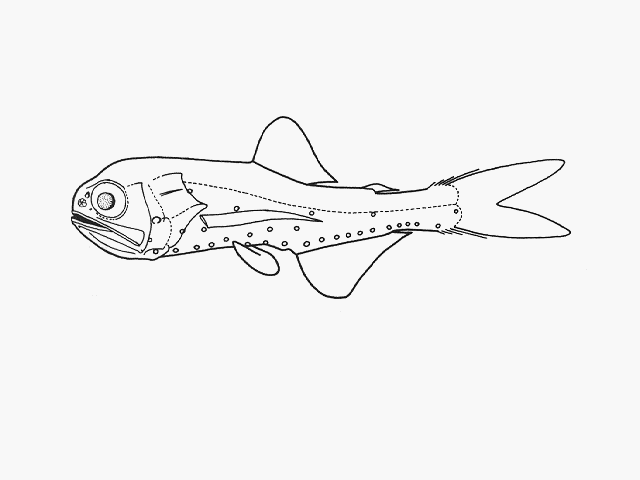| Myctophidae (Lanternfishes), subfamily: Myctophinae |
| 10 cm TL (male/unsexed) |
|
bathypelagic; marine; depth range 0 - 2000 m, oceanodromous |
| Indian Ocean: 18°N-20°S, to 42°S in the Agulhas Current. Pacific Ocean: 21°N-10°S. |
|
Dorsal spines (total): 0-0; Dorsal soft rays (total): 12-14; Anal spines: 0-0; Anal soft rays: 18-20; Vertebrae: 31-32. Anal organs 10-11; mature males have large 3 to 5 translucent supracaudal gland and smaller infracaudal gland; mature females have small supracaudal gland and much smaller infracaudal patches (Ref. 39633). |
| Benthopelagic and mesopelagic in slope and oceanic waters, but usually not high-oceanic. Occurs in the upper 200 m at night (Ref. 4066). Epipelagic in nearshore areas at 0-856 m (Ref. 58302). Occasionally seen during dark nights on slopes that are near very deep water. Attracted by light like moths, becoming disoriented and darting frantically in all directions (Ref. 48635). |
|
Least Concern (LC); Date assessed: 25 June 2018 Ref. (130435)
|
| harmless |
|
Collected during the Hearst Expedition 2011 done off Batangas and Mindoro, off SW Luzon, otter trawl in 154-245 m (Ref. 95664). Also Ref. 9835. |
Source and more info: www.fishbase.org. For personal, classroom, and other internal use only. Not for publication.

